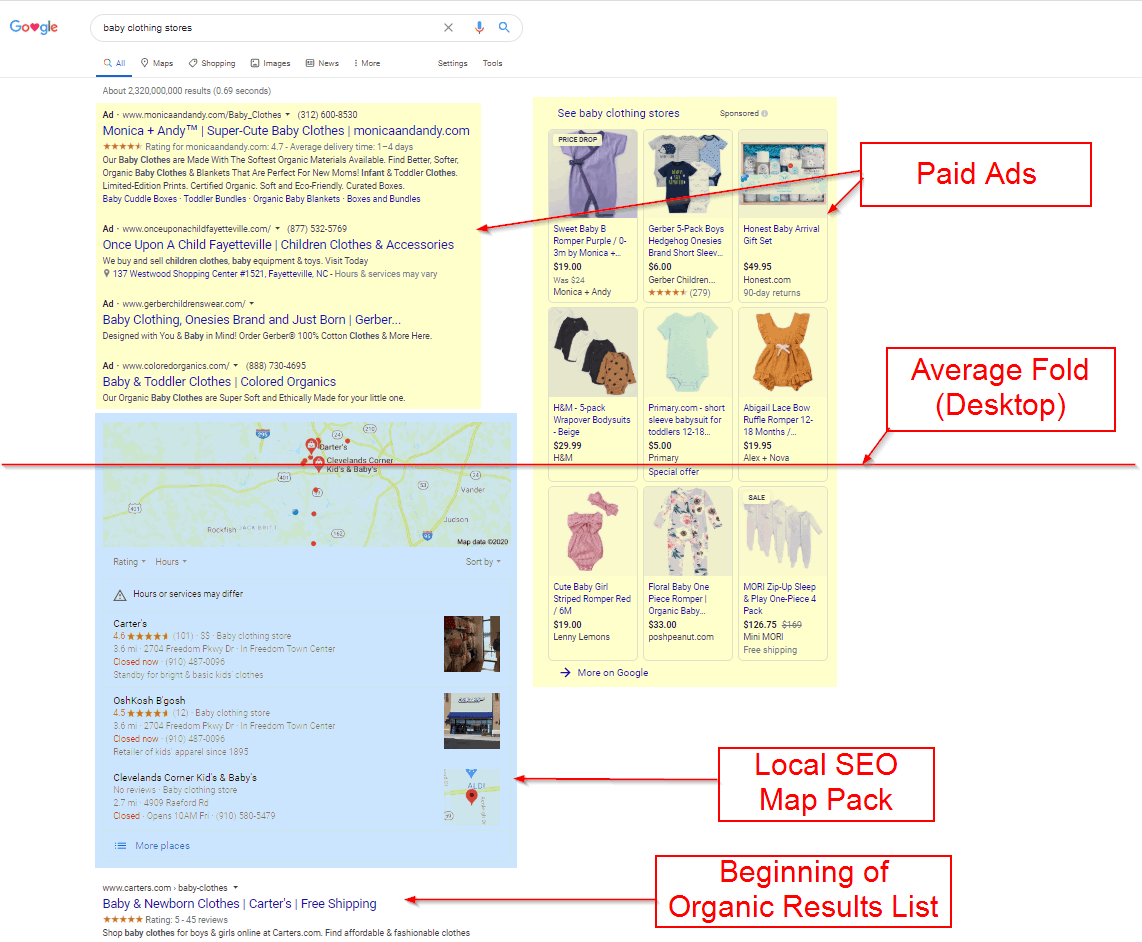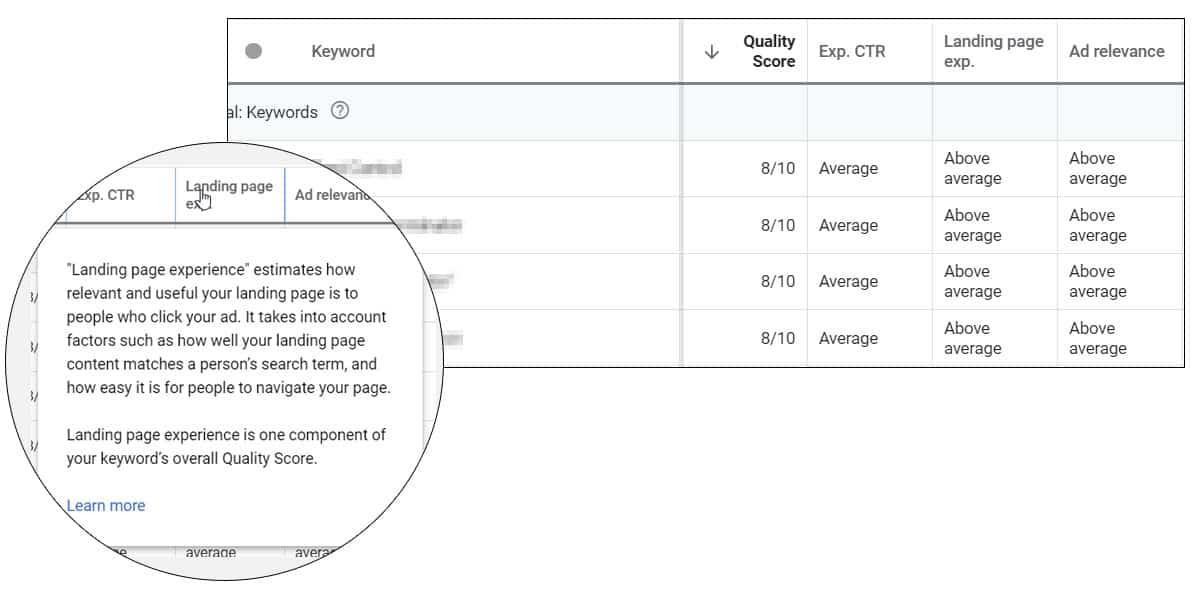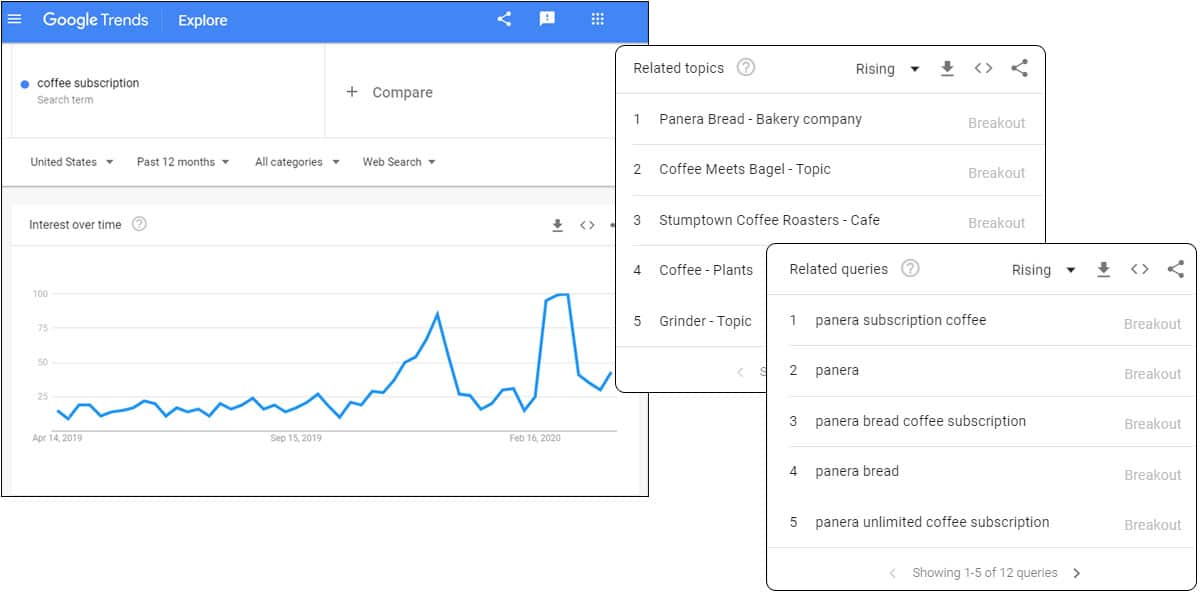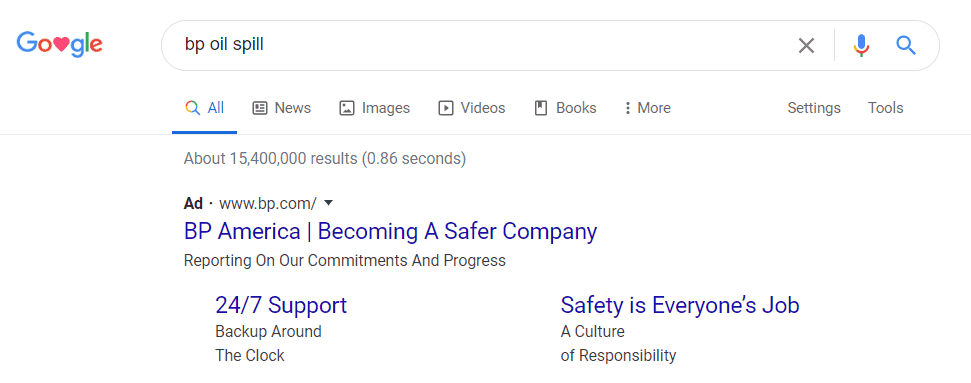Paid Advertising or SEO: Boost One, Boost Them All
It is far too common that PPC efforts and SEO efforts are managed independently instead of in conjunction with one another in an integrated way—and as such, brands that silo the two sets of initiatives often miss out on the benefits of bringing the two together. Here at Hive Digital, our Paid Advertising and SEO teams work hand in hand to ensure our clients can leverage the collective insights, boosting performance between the two channels (and often, the performance of other channels as well).
Our SEO and Paid Advertising experts have created a list of their favorite reasons for integrating marketing efforts between these two channels:
1. “Brand Domination of the SERP / Funnel”
Paul Woodhouse, SEO
Thinking of the search engine results page (SERP) in terms of real estate, it becomes easy to see how taking up more space on the page can enhance a brand’s opportunity to gain a user’s click. This is particularly important for brands that may have multiple ways in which a user may prefer to engage with them.
A great example of this kind of scenario can be seen with search query “baby clothing stores,” as shown here:

Taking the search query “baby clothing stores” for example, users may have different intents behind this query and may act in any of the following ways:
1. Users may be enticed to click on one of the ad areas because of the ad copy messaging, pricing details or offers, and/or the ability to quickly dive into a subset of relevant products (e.g. the “baby cuddle boxes,” “toddler bundles,” or “baby blankets” referenced in the ad extension features).
2. If not intending to immediately dive into an online purchase, they may instead want to explore the contents of the Local SEO map pack results—which includes the store’s ratings and reviews, and also location and hours information—such that they can visit the store in person and/or consider other shoppers’ experiences.
3. Alternatively, should the user want to know more about the brand itself prior to becoming a loyal consumer, or simply just didn’t yet click in one of the aforementioned areas before reaching the organic section, the positioning of the organic results and/or strength of the copy can secure the click.
Owning more real estate on results pages has also been shown to give users the perception that your brand has a lot of authority, can be trusted, and is worth exploring.
It’s important to note, too, that while paid ads can take up much of the real estate above the fold and are served ahead of organic results, they don’t always secure a user’s click when served in addition to organic listings. Data comparing the two types of listings most often tends to indicate that the presence of paid ads actually increases the click-through-rate (CTR) associated with organic results—creating yet another way that SEO and PPC work together. The general thought behind this type of effect is that ad content influences how users will interpret and engage with organic listings via their informative contributions; especially, in comparison to how users may perceive a competitors’ listing(s). Think of it as the combination of these ad and organic listings painting a more holistic picture of your brand, and how that picture can empower a user to feel more confident in both their selection and future decisions in engaging with your brand.
2. “Testing, Testing, Testing”
Jake Bohall, SEO
Jake Bohall, our SEO Department Head with over a decade of experience, explains that paid ads data should be a critical part of an SEO’s testing strategy, leveraging the data in the following ways:
- Testing landing pages to improve organic conversion rates—which can then be tested and rolled out to other channels or pages on the website, contributing to lifts in overall performance.
Setting the tone for what users expect to see on a landing page (and how they then choose to engage), is the copy that users see in ads or organic listings. Since paid ads offer more options with respect to defining a targeted audience, and provide more visibility into both keyword-level data and actual search query data for conversions, paid ad platforms offer a greater deal of control in testing both how users interpret copy for any given keyword and engage with the associated landing page(s). This insight can then be passed along to SEO teams for their initiatives and also rolled out to other channels that can leverage the information, helping boost overall performance for the website.
2. Testing keywords to target more aggressively (as it’s the only way to get keyword-level conversion data).
Unfortunately, search engines and many popular web analytics tools don’t make it easy to collect keyword-level conversion data for organic initiatives; however, this data is made available for many PPC efforts. As such, when paid ads data indicates specific keywords are successful (or not successful) at garnering conversions, these insights can be passed along to SEO teams and help them in prioritizing their initiatives around said keywords.
3. Testing messaging that can be applied to meta descriptions, improving organic CTR.
A clever way to boost the rate at which people click on your organic listings is to optimize the content they see under your page title within search result listings. This is done by manipulating meta descriptions such that users better understand what the page is about, and is often assisted by call-to-actions (CTAs) or incentives that encourage users to click your page. Since paid advertising efforts are often testing CTAs and messaging in their search for the strongest, winning combinations, the data they collect can often benefit SEO teams in selecting stronger copy for their organic efforts.

3. “Testing Content Quality”
Tripp Hamilton, SEO
Working with colleague and bestie, Tripp Hamilton, our departments regularly implement initiatives that test the content quality of newly developed pages, using Google’s Quality Score metric as an indicator from Google as to how relevant the new content is for a given keyword or phrase. For each paid ads keyword with adequate data, a Quality score is assigned, with one of the metrics composing this score being “Landing page experience.” Landing page experience assesses how well the content matches a user’s search query, and how easy it is for users to navigate your page—elements that also contribute to strong SEO performance.


4. “Visibility While SEO is in the Works”
Jeff Cohen, SEO
Having used all these tactics firsthand for hotels, fashion ecommerce, and major theme parks, our expert Jeff says he’s seen paid ads complement SEO in the following ways:
1. Target high value terms more immediately, while ramping up organically.
Organic initiatives can often take weeks—even months—to build, implement, and see results; whereas, ads can often begin serving within 1-2 days of being launched (depending upon the ad platform’s process for approving ads). This enables a brand the ability to gain immediate visibility for a given term via ads, relative to SEO, and also gain insights from data feedback that can then benefit SEOs in their processes.
2. Target seasonal or event-related terms (terms for which brands need instant visibility in a limited window of potential search).
Because the nature of SEO efforts can take some time to build and implement, be indexed, and/or see results, their efforts tend to be best applied to a brand’s evergreen or long-term initiatives—meaning that those initiatives associated with seasonal or event-related terms can be best served by ad platforms. In this way, the two channels complement one another, ensuring a brand has visibility for their given term, no matter the type.
3. Target terms that aid in demand generation.
Examples may include a new product line/name, brand name, event name, etc. that doesn’t yet have search volume. With paid ads, we can target similar keywords to build awareness, encouraging users to begin looking for our new terms organically.
5. “Rising Google Trends Data”
John Gibbings, SEO
Always looking out for what’s new on the horizon, expert John Gibbings loves to test ads with rising Google Trends data, using paid channels to capitalize on active searches while content development teams build out related web pages. Upon exploring a search term, the Google Trends platform provides data that includes related search topics and queries, whose search volume is on the rise.


6. “Address Negative PR”
Nina Martinez, Paid Advertising
Another way that paid ads can complement SEO efforts is to quickly implement and promote messaging designed for damage control, leveraging both the placement of ads and the ability to target specific keywords for added visibility. Targeting terms associated with sensitive PR issues grants brands the ability to address the negativity in a way that can be prominently positioned in the SERPs, but also serve across a wider range of terms (and often faster) than organic initiatives.

7. “Shared Information”
Paid advertising and SEO teams can also benefit from sharing information that may influence their tactics and/or strategies. Examples can include any type of news or information that might explain changes in engagement with paid and/or organic results—such as changes in ad formats or features that might make them more engaging, significant increases in PPC bids that indicate increased aggressiveness in the competitor landscape, the emergence of new competitors, etc.

8. “Teamwork”
Fred Dees, Paid Advertising
A complete digital marketing strategy has to include both Paid Search and SEO working hand in hand. Paid is tasked with getting high quality traffic to the site, and SEO is tasked with making the on-page experience suitable for completing conversions. Besides each being responsible for their part, they help each other through data sharing. Remarketing Lists will often times be made up of users that visited the site organically. The Power of 7 Rule says that an ad needs to be seen seven times before finally sticking. Remarketing allows us to set up rules targeting a list of users that has visited the website but not converted, therefore giving us the ability to continue marketing to users after the initial ad impression. Keyword conversion data is not available to SEO teams, but is an element that drives a lot of activity in Paid Search. Being able to offer this data to SEO teams helps give them a more holistic picture of what terms are driving the most valuable traffic.
SEO & PPC: Leveraging Them Together
Essentially, there are many different ways that Paid Ads and SEO work together, and it’s important for any mature digital marketing strategy to ensure it is leveraging the combined capabilities and learnings from the two channels. Doing so creates a stronger, more integrated approach to marketing that enhances brand visibility in search engines and contributes to stronger gains from these efforts, both individually and collectively—and the benefits don’t just stop there. The acquired learnings and shared assets can also be applied to other channels too, improving digital performance across the board.













